| Columns Retired Columns & Blogs |
Maybe this is a dumb question but why do we see no pre-ringing from the anti-aliasing filter?
Sony specifies a tolerance of +0.5, –1dB for the PCM-1630's overall record/play frequency response; when measured with emphasis off, the result was a fine +0.2, –0.9dB from 10Hz to 20kHz (fig.1 shows the infrasonic response from 0.125Hz to 50Hz, fig.2 shows the response from 1kHz to 26kHz). The anti-alias filter came into effect above 20kHz; at 22kHz, for example, the output was already 50dB down. Considering the minor nature of the variations in frequency response, there is unlikely to be an audible effect.
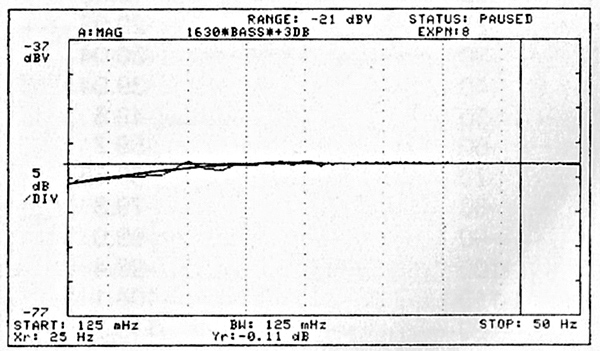
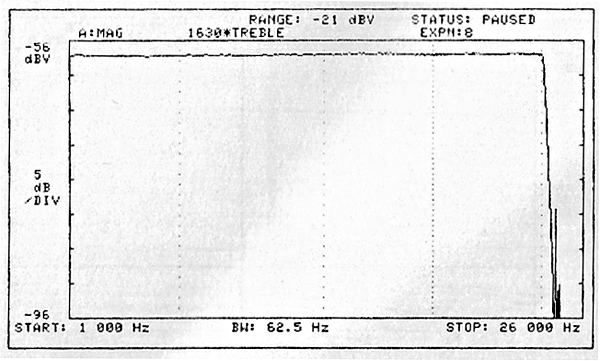
The two channels agreed closely on the measured parameters, and the unweighted signal/noise ratio was fine at 96dB with preemphasis, 90dB without. Using the CCIR ARM (1kHz) weighting, the benefit of preemphasis is shown more clearly with more representative record/play noise ratios of 85dB without preemphasis, 90dB with.
Full level—0dB—on the excellent level meters, indicated virtually full modulation; unlike VU-meter systems, however, there was no additional margin.
The record/replay linearity was checked using a precision spectrum analyzer over the full available dynamic range: the surprisingly good results are given in Table 1, which shows that a decent amount of dither has been incorporated to effectively linearize the low-level performance. For comparison, most CD players generate considerable linearity errors by –90dB modulation, typically 3–5dB, while errors of 10dB are not uncommon. The 1630 was 1dB accurate over the record/replay cycle at –90dB and continued to store and recover analyzed sinewaves placed well into the broadband noise floor, eg, down to –120dB.
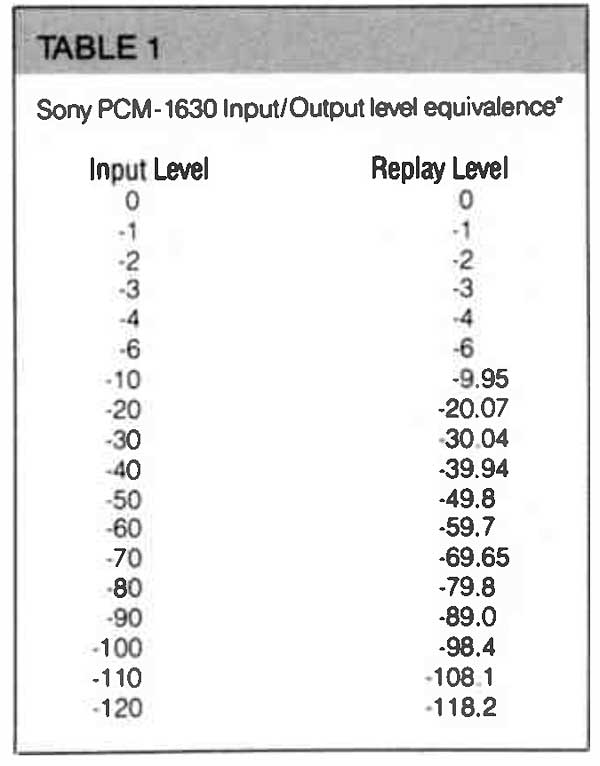
Fig.3, a ±50Hz zoomed analysis, actually shows that a 1kHz signal can be recovered at –118.04dB, over 20dB below the cutoff point of an undithered 16-bit system! Returning to more realistic signal levels, fig.4 shows the harmonic spectrum, or should I say the lack of it, for a sinewave recorded at –90dB. Fig.5 shows the corresponding waveshape, a substantially pure one, masked by the presence of some random-looking noise.
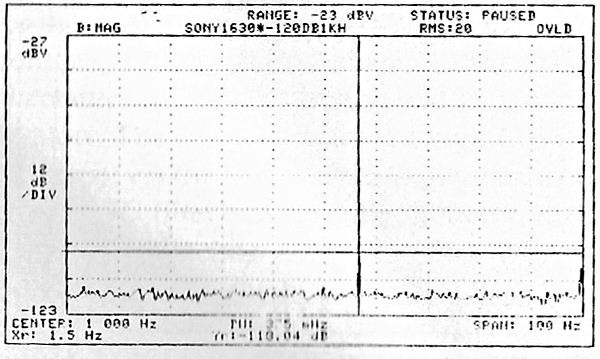
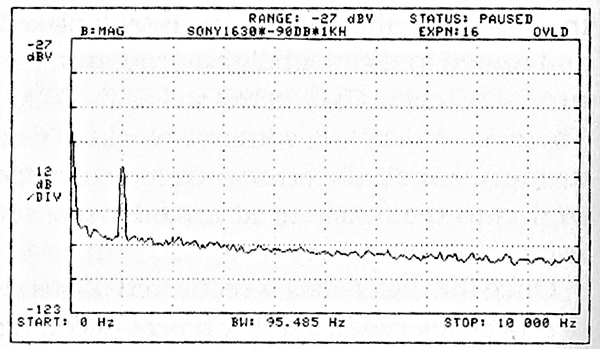
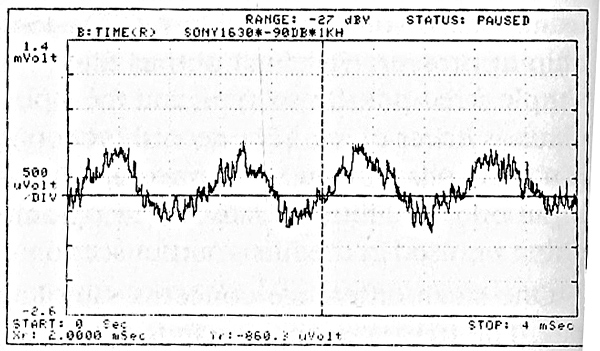
This good distortion picture was little changed when the unit was driven to full level (fig.6, 1kHz signal at 0dB). Third harmonic at –82.5dB (better than 0.01%), for example, was the only significant product. Note the absence of digital spuriae. Reducing the level to –10dB resulted in little change, apart from the second harmonic now being higher in level (–82.7dB) than the third. Fig.7 shows the distortion spectrum and resulting alias products for a full-level 20kHz tone. This is a demanding test, but the result was really good, with the only significant inband spurious tone placed at 4kHz (44kHz–2×20kHz) at a harmless –75.19dB. Good suppression was also seen for the 44kHz sampling frequency, with an absence of higher-frequency products. The alias products decrease rapidly both with frequency and record level.
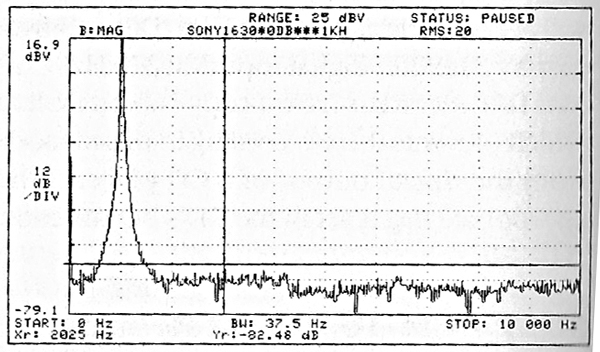
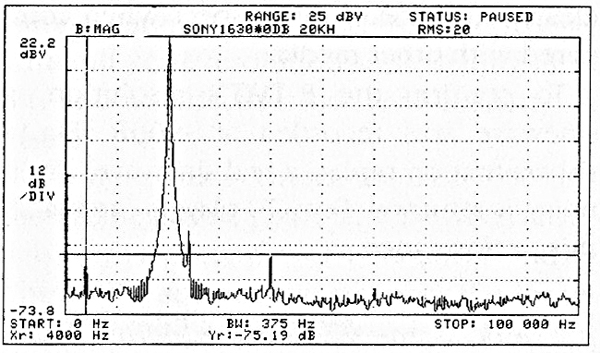
Fig.8 shows distortion for a mid-level signal, 1kHz at –40dB, the spectrogram extending to 100kHz. The 22kHz spurious product was –95dB relative to full level, while the 1kHz distortion was around 0.07% and close to the noise floor. Other spuriae were well suppressed.
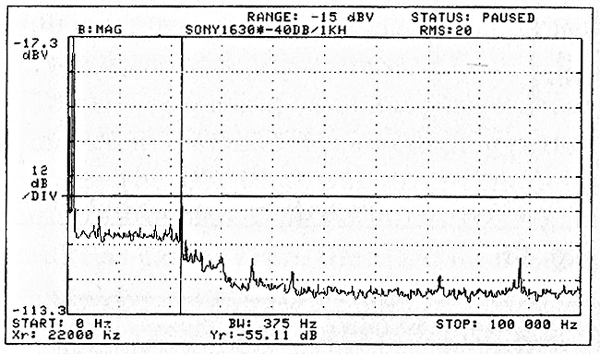
Another cruel test concerned both full-level and –10dB level intermodulation, the test signal consisting of a 1:1 mixture of 19 and 20kHz. At 0dB (fig.9), the main product was 1kHz at –71dB, a good result for a recording system, while reducing the drive level to –10dB resulted in the 1kHz product vanishing into the noise floor at –85dB.
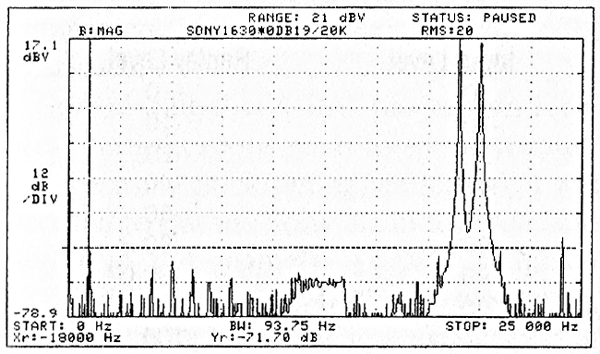
Channel separation is important in the context of a professional system, and here the 1630 confirmed its competence, exceeding 100dB from 20Hz to 20kHz: typical measurements were 20Hz, 117dB; 1kHz, 119dB; 20kHz, 103dB.
A fine performance was seen in the replay of a 400Hz squarewave with a sensible risetime (fig.10). The flat tops confirm the extended low-frequency bandwidth, with quite moderate ringing. When the input was driven with a fast-risetime (10µs) impulse, the input alias filter rang quite hard, and the output was not linear phase (fig.11). However, it was non-inverting.
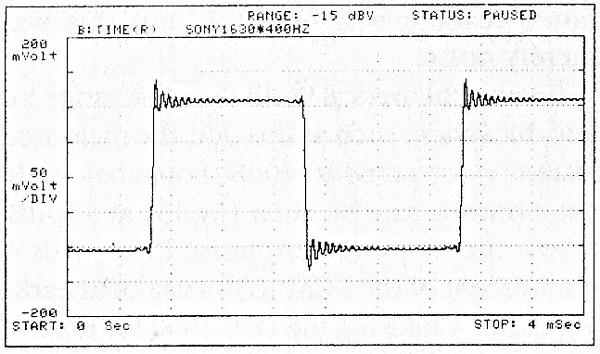
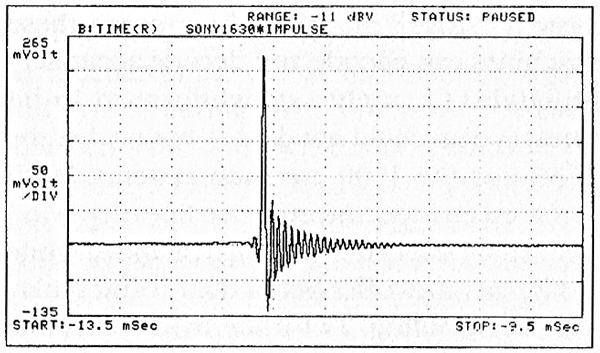
These results show the PCM-1630 to be a well-developed design, with no obvious technical flaws and a wide linear dynamic range. How about its domestic equivalent?—Martin Colloms

why do we see no pre-ringing from the anti-aliasing filter?
It's a minimum-phase filter, presumably operating in the analog domain.
John Atkinson
Technical Editor, Stereophile

We sure have come a long way from the 1630 and DAT, thank goodness!
While Apogee's retrofit filters provided an appreciable increase in 1630 performance, the limitations of the 16-bit system, particularly at low levels, could not be overcome.
And though DAT certainly seemed convenient, I found the shelf life to be rather limited. After a few months, many tapes developed sections that played back sounding much like a fax transmission! I wouldn't want to archive to such a format.
Happily, we now have systems that can deliver a superbly clean 24-bit capture at 192 kHz.
When I first heard digital back in early 1983, my feeling was that it took vinyl 100 years to get to where it was, and that in another 100 years, digital will have arrived too. ;-}
I feel most fortunate that we didn't have to wait anywhere near that long.
Best regards,
Barry
www.soundkeeperrecordings.com